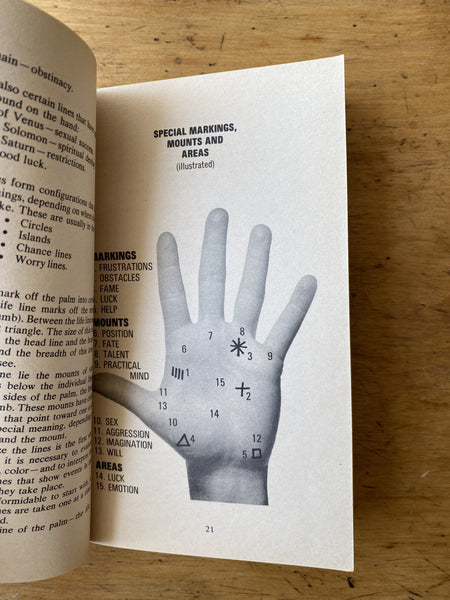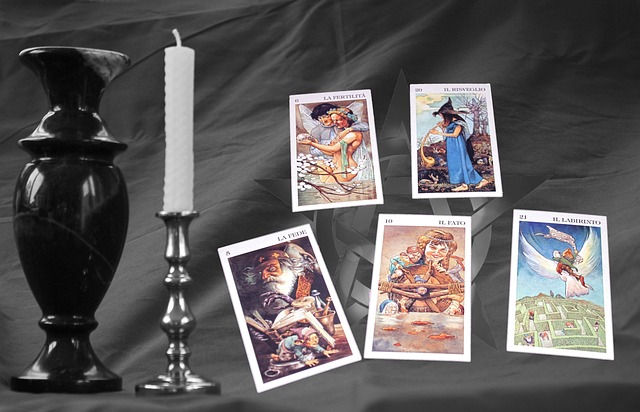
Lenormand Cards aren't esoteric, and they offer a more traditional cartomantic approach in fortune telling. These cards are based on the standard decks of playing cards and can be used in many ways.
Lenormand, a deck of 36 cards. Each card is personalized with a name. The deck is designed in such a way that it provides a physical and visual picture of a situation. Some cards can even be associated with the zodiac signs and planetary signs. The cards are typically paired, with the central one reading like a sentence.
The Lenormand should be used in conjunction to a Grand Tableau. A Grand Tableau is a spread consisting of three to five cards. The focus card, or central card, is selected. The Grand Tableau has a set order in which the cards are placed, giving each one a unique meaning. The cards surrounding the focus card are called anchor cards, which are locators.

The Lenormand is also used to build conics, which are simple sentences that represent a combination of cards. These conics are typically based on one card, and a word associated with the card. For example, a hula dancer might be assigned to the Ring card, which is symbolic of agreements. The card might also have a clover as it represents luck. The meanings of the cards vary depending upon the deck and artwork.
There are some similarities between The Lenormand and the Major Arcana of Tarot. It's a bit more complicated, and it uses more cards to achieve its effect. The decks have images that range from animals to flowers and court cards. The inset is often used to build a tree.
Lenormands, in contrast to tarot, focus only on the external and physical aspects of a situation. For example, the Snake and Fish may be interpreted as symbols for water pipes in the house. The Whip – Child symbolises a small argument.
The Lenormand can often be confused with the Tarot. The Tarot can be used to read the personality or inner emotions of a person. It can also help you learn many things, like Karma. The Lenormand astrological reading method combines playing cards with everyday imagery.

Although the Lenormand may be easy to master, it can prove difficult for a beginner. You can start by practicing. Begin by reading just one card at a given time. Then let the cards lead. You can learn more about the Lenormand through various online sources. You might also find books that provide a comprehensive list of combinations. Lenormand provides powerful tools to help you find the answers to all your questions.
FAQ
Where can I get free resources to learn more?
There are many websites that help people find new hobbies.
Here are some of the favorites:
www.trythisathome.com - This site provides a list of over 100 different hobbies. It also includes information on how to get started on each one.
www.hobbyfinders.org - This site offers a database of thousands of activities that you can search by interest, skill level, location, and more.
www.indiebazaar.co.uk - IndieBazaar is an online marketplace designed specifically for independent artists and musicians. The site features hundreds of products ranging from artwork to music gear.
www.pinterest.com/explore/hobbies - Pinterest is a social media network that lets users "pin" images they find interesting onto their boards. Boards let users organize what they like into particular categories.
www.reddit.com/r/Hobbies Reddit is another social networking platform that allows users to link to articles, videos or other content. Users can vote on the posts they consider most valuable.
What are competitive hobbies?
You can compete in running, swimming or cycling as well golfing or tennis.
They're a great way to get social interaction and are enjoyed by those who love physical activity.
You'll likely find others who are interested in your hobby if it involves physical activity.
This could mean joining a club, or group that meets regularly to do sports together.
You can also participate in team games where you play alongside others.
These include cricket, football, netball, hockey, netball, soccer, rugby, cricket, rugby, batsball, hockey, volleyball, badminton squash, handball and table tennis.
There are many different types of competition.
Some competitions are organized for purely recreational purposes.
Others are designed for competitors to prove their skill.
Other rewards are available to recognize exceptional performance.
In these cases, winners receive prizes.
Other competitions are meant to test competitors' strength and stamina.
These are endurance events.
For example, marathon races, triathlons, Ironman Triathlon, etc.
These events are often contested by athletes who train hard.
To prepare their bodies and minds, they will have to adhere to a strict training plan.
They might need to travel some distance during preparation.
It is important that you remember that not every athlete can compete in every type or event.
Why do we need hobbies
Hobbies play an integral part in our lives. It allows us to unwind and recharge, think creatively, exercise, socialize, have fun, and allow us to enjoy life. We also have the chance to learn new skills and pursue lifelong passions.
Hobbies can help us find meaning and purpose.
These can often be a great way to get some extra time while you have nothing else.
They're even fun!
If you don't find time for hobbies, it's likely that you don't have enough time for any other activities.
So take a look at all the options available to you. Start a hobby today, if you don’t have one already!
Statistics
- In comparison, men in the “no humor” condition were refused 84.6% of the time and were only accepted 15.4% of the time. (time.com)
- This 100% accurate personality-analyzing hobby quiz discovers your passion based on your characteristics. (quizexpo.com)
- A new survey by Pew Research Center of teens ages 13 to 17 finds that 36% of girls feel tense or nervous about their day every day; 23% of boys say the same. (pewresearch.org)
- I am 100% biologically a woman (discover.hubpages.com)
- The Role of the Mind in Sex, Dating, and Love: Men in the “humor” condition received phone numbers from 42.9% of the female participants and were refused 57.1% of the time. (time.com)
External Links
How To
How to Start Gardening
Gardening is one among the oldest forms. It requires patience, persistence and determination. First, choose a place where you would like to grow food. This could be on a large piece of land or in your backyard. Next, pick the type of plants that you would like. Do you prefer vegetables, or flowers? Some people enjoy growing herbs and others prefer raising livestock like rabbits. Before you decide on the type of crops you want to plant, it is important to consider the space available. You might consider growing berries or fruits if you live in a cold climate.
After choosing what you want to plant you need to prepare your soil. Soil is essential in determining whether your plants will thrive or fail. Organic matter is essential for the health and well-being of your plants. Organic matter is made up of leaves, twigs grass clippings, manure and compost. Once you have prepared your soil, you need to add nutrients. You will need different amounts of nutrients depending on which type of plants are being grown. You can calculate these values online with a fertilizer calculator. There are many fertilizers on the market, so ensure you understand what you are buying.
After you have prepared your soil, and added the correct nutrients, you will need to wait until your seed germinates. The process typically takes 2 to 3 weeks depending on the weather conditions and temperature in your area. Once your seeds are sprouted, you must water them regularly. Too much or too little water can cause problems. Make sure to give your plants water at regular times and not overwater. Overwatering can lead to root rot and fungal diseases. Consider that plants generally need less water in the warmer months than they do in winter. Some plants must be dried out after being watered. Tomatoes, for example, need to be kept moist but not too wet. They don't like to sit in soggy soil. After plants finish flowering, they need to go dormant. The time when plants stop producing new life and store energy for the next season is called dormancy. During dormancy, the plant stops sending signals to its roots telling them to produce food. Throughout this time, plants can store energy. If temperatures fall below freezing or the plants are not getting enough sunlight, they will die.
Urban environments may limit the variety of plants you can grow. Concrete sidewalks, roads, buildings and parking lots are all common in urban areas. These blocks block sunlight from reaching ground level. Concrete absorbs sunlight and blocks the soil below from receiving adequate sun exposure. Many plants can't survive in urban environments due to lack of sunlight. However, many plants can still thrive in urban environments. Many trees, perennials, shrubs, as well as shrubs can be adapted to urban living. Many annuals can also grow indoors in pots. You can have fresh greenery all year round with container gardens.
Now you're ready to plant.